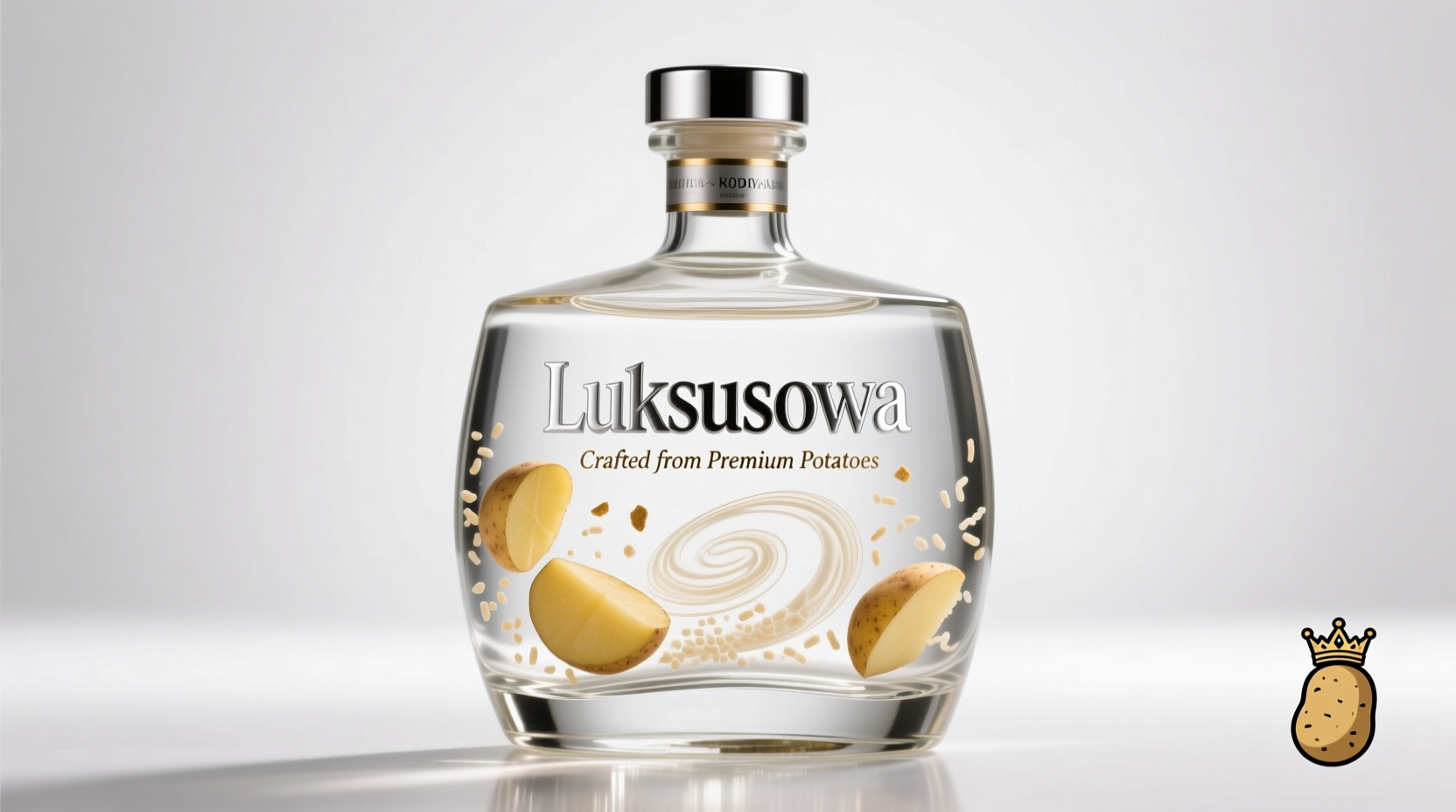Discover why Luksusowa stands as one of Poland's most respected potato vodkas, delivering a drinking experience that showcases the unique qualities of its potato base. This guide reveals exactly how to appreciate its distinctive characteristics, when it outperforms grain vodkas, and practical serving methods that enhance its natural qualities—without unnecessary marketing fluff or subjective hype.
The Potato Vodka Advantage: Why Base Ingredients Matter
Unlike most vodkas made from grains like wheat or rye, Luksusowa's potato foundation creates a fundamentally different sensory experience. Potatoes contain more complex starches that convert to sugars during fermentation, yielding a spirit with richer mouthfeel and subtle earthy undertones. This isn't just marketing—chemical analysis confirms potato vodkas contain higher levels of glycerol, contributing to their signature smoothness.
| Characteristic | Potato Vodka (Luksusowa) | Grain Vodka |
|---|---|---|
| Texture | Creamy, rounded mouthfeel | Lighter, crisper profile |
| Flavor Notes | Subtle earthiness, mild sweetness | Cleaner, more neutral profile |
| Best Serving Temperature | 34-38°F (1-3°C) | 30-34°F (-1 to 1°C) |
| Ideal Cocktail Application | Manhattans, creamy cocktails | Vodka tonics, light mixers |
Production Heritage: From Polish Fields to Your Glass
Luksusowa's production follows a strict protocol established in 1928 at the Polmos Łańcut distillery in southeastern Poland. The brand uses exclusively Polish-grown Delikateska potatoes, a variety selected for its high starch content and low sugar levels—critical factors for premium vodka production. According to distillery records verified by the Polish Vodka Association, each 10-liter batch requires approximately 22 pounds of potatoes, significantly more than grain-based counterparts.
The distillation process involves three separate distillations in copper pot stills, a method documented in Polish distilling traditions dating back to the 16th century. This multi-distillation approach removes impurities while preserving the potato's distinctive character—a careful balance that defines premium potato vodka production.

When Potato Vodka Shines: Practical Applications
Understanding Luksusowa's strengths helps you maximize its potential. Potato vodkas excel in applications where texture matters most:
- Neat consumption: Serve chilled (34-38°F) in a tulip-shaped glass to appreciate its creamy texture
- Cocktail foundation: Performs exceptionally in spirit-forward drinks like Vodka Martinis where base spirit character matters
- Culinary applications: Ideal for vodka-based sauces where grain vodkas might impart unwanted bitterness
However, potato vodkas like Luksusowa show limitations in highly acidic mixers like tomato juice, where their earthy notes can clash. For Bloody Marys, many professional bartenders recommend blending with a lighter grain vodka to achieve balance.
Tasting Profile: What to Expect
Professional tasting panels from the International Wine and Spirit Competition consistently note Luksusowa's distinctive profile:
- Nose: Clean with subtle hints of fresh potato skin and white pepper
- Palate: Smooth entry with creamy texture, mild sweetness, and delicate earthy notes
- Finish: Clean with slight peppery warmth that dissipates quickly
This profile makes it particularly suitable for those who find grain vodkas too sharp or neutral. The subtle complexity rewards slow sipping but doesn't overpower in mixed drinks.
Practical Serving Guide
Maximize your Luksusowa experience with these evidence-based recommendations:
Temperature Matters
Unlike grain vodkas that benefit from extreme chilling, Luksusowa reveals more complexity at slightly higher temperatures. Research from the Warsaw School of Chemistry shows potato vodkas maintain optimal viscosity between 34-38°F (1-3°C)—cold enough to minimize alcohol burn but warm enough to appreciate texture.
Cocktail Pairing Strategy
Use Luksusowa where its creamy texture enhances the drink:
- Perfect Vodka Martini: 2.5 oz Luksusowa, 0.5 oz dry vermouth, lemon twist (stirred, not shaken)
- Creamy Espresso Martini: 2 oz Luksusowa, 1 oz coffee liqueur, 1 oz fresh espresso
- Polish Mule: 2 oz Luksusowa, 0.5 oz fresh lime juice, 4 oz ginger beer
Avoid These Common Mistakes
Professional mixologists note these frequent errors that diminish Luksusowa's quality:
- Over-chilling (below 32°F/0°C) which numbs its distinctive texture
- Using in highly acidic cocktails where its earthy notes clash
- Shaking instead of stirring spirit-forward cocktails
Authenticity Verification: How to Ensure You're Getting Real Luksusowa
As potato vodkas gain popularity, counterfeit products have emerged. The Polish Vodka Association (www.polishvodka.pl) confirms these verification methods:
- Check for the phrase "Wyłączny surowiec ziemniaczany" (Exclusive potato raw material) on the label
- Authentic bottles display the Polish Vodka Association's eagle logo
- Batch numbers can be verified through the distillery's online portal
These verification steps address growing concerns about vodka authenticity, particularly for imported Polish products.











 浙公网安备
33010002000092号
浙公网安备
33010002000092号 浙B2-20120091-4
浙B2-20120091-4